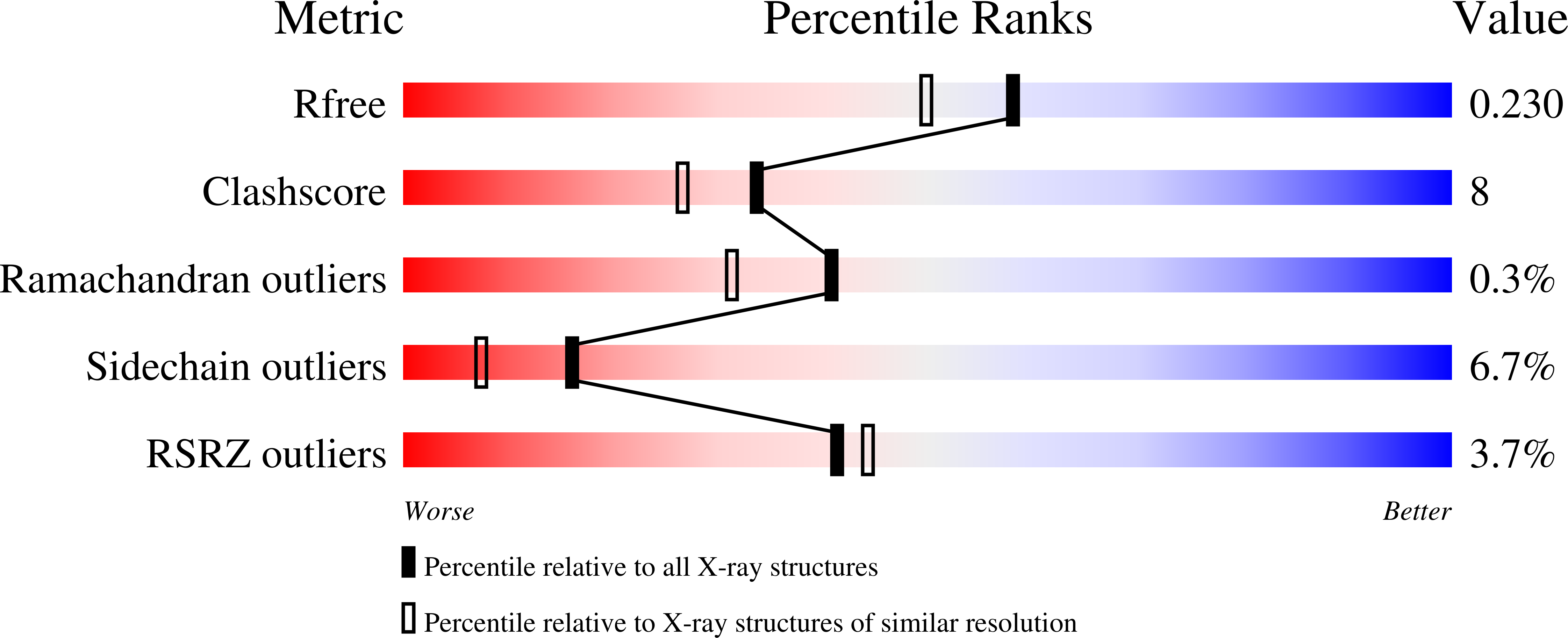Insights into the structure, mechanism, and regulation of scavenger mRNA decapping activity
Gu, M., Fabrega, C., Liu, S.W., Liu, H., Kiledjian, M., Lima, C.D.(2004) Mol Cell 14: 67-80
- PubMed: 15068804
- DOI: https://doi.org/10.1016/s1097-2765(04)00180-7
- Primary Citation of Related Structures:
1ST0, 1ST4 - PubMed Abstract:
Complete removal of residual N-7 guanine cap from degraded messenger RNA is necessary to prevent accumulation of intermediates that might interfere with RNA processing, export, and translation. The human scavenger decapping enzyme, DcpS, catalyzes residual cap hydrolysis following mRNA degradation, releasing N-7 methyl guanosine monophosphate and 5'-diphosphate terminated cap or mRNA products. DcpS structures bound to m(7)GpppG or m(7)GpppA reveal an asymmetric DcpS dimer that simultaneously creates an open nonproductive DcpS-cap complex and a closed productive DcpS-cap complex that alternate via 30 A domain movements. Structural and biochemical analysis suggests an autoregulatory mechanism whereby premature decapping mRNA is prevented by blocking the conformational changes that are required to form a closed productive active site capable of cap hydrolysis.
Organizational Affiliation:
Structural Biology Program, Sloan-Kettering Institute, New York, NY 10021, USA.
















